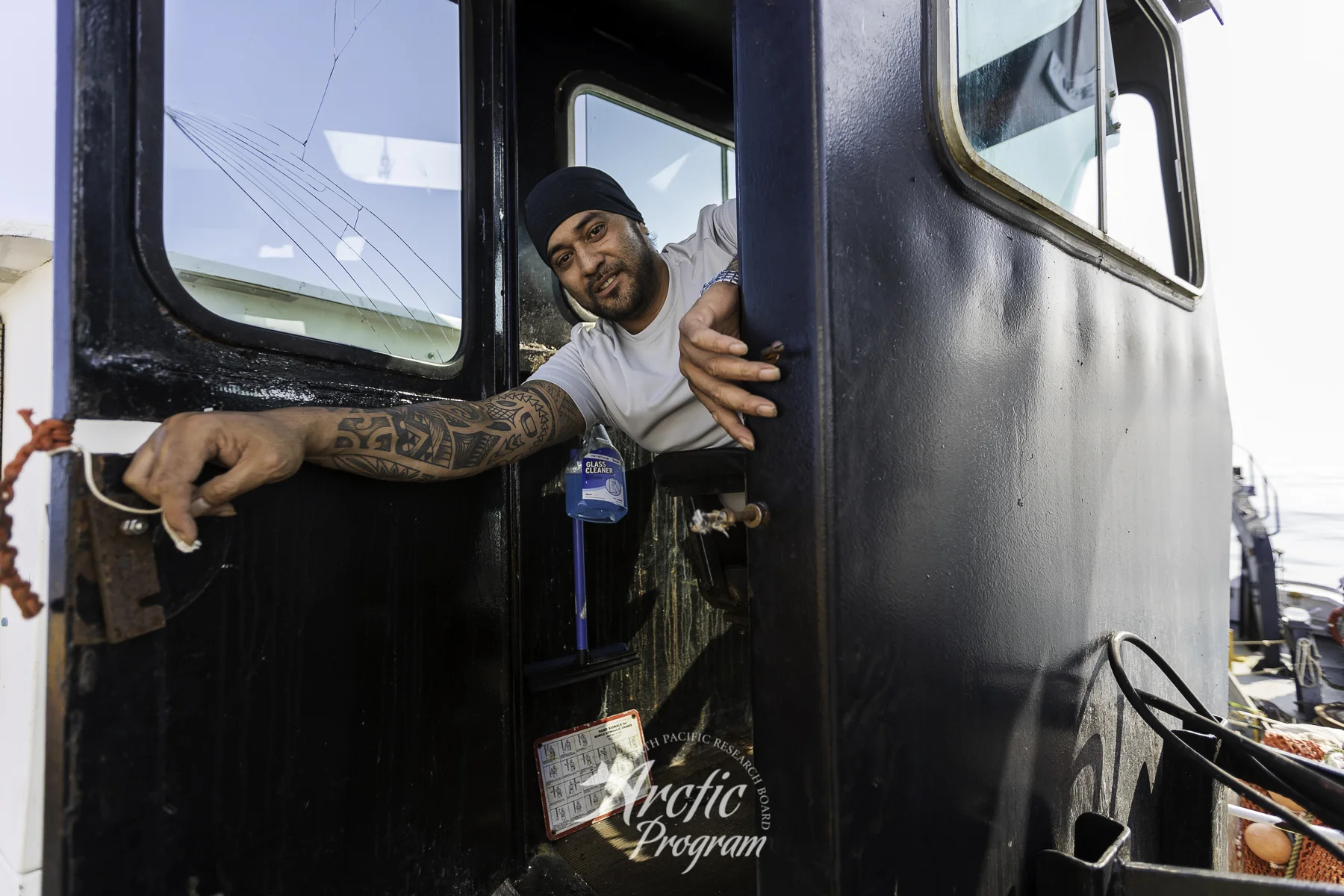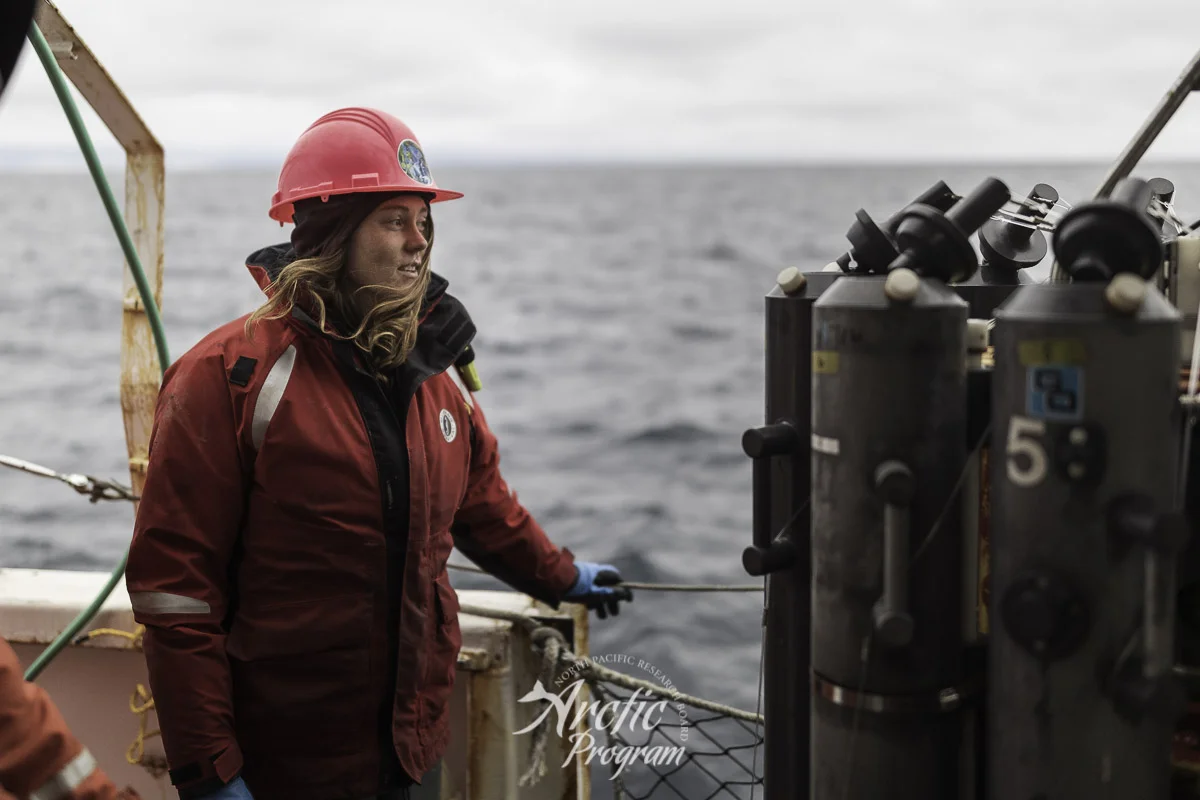The bottom beam trawl reveals its bounty from the Arctic seafloor bottom. Photo by Brendan Smith/NPRB
Eto rano? [Is it morning?]
Da, 6 chasov [Yes, 6AM]
Dobroye utro [Good morning]
Dobroye urto. Kak tebe spalos? [Good morning. How did you sleep?]
Cholodno [It was Cold]
I ty? [And you?]
Prohladno. [Coldly]
Eto normalno - mi v Chukutskom More [It is normal. We are in the Chukchi Sea.]
We are at 73°N on the edge of the North American Continental Shelf, 100 miles from the international dateline, and on the edge of the Arctic Basin. Its August and its 34 degrees. Its warm. There is no ice. The ice is 200 miles to the north.
We started this cruise at station CH-01 just east of Russian waters and we have two Russian scientists aboard, Igor Grigorov and Natalia Kuznetsova. Igor is an Ichthyologist at the Faculty Biology, Ecology and Biotechnology at the Far East Federal University. Natalia is a legend and has spent more than 2000 days at sea. Both are at the Russian Federal Institute of Fisheries and Oceanography (VNIRO). They are part of an international collaboration and a 14-person science team and 11-person crew on the Ocean Starr, part of the Arctic Integrated Ecosystem Research Program. This program has been surveying Arctic waters in the northern Bering Sea and Chukchi Sea for three years (2017-2019). After three weeks of mooring deployments and recovery and transects along the Barrow Canyon, this portion of the 2019 cruise left Nome in mid-August and started the northern-most transection the Chukchi Shelf.
Libby Logerwell (background) shows one of the AB’s, Austin, a recent sample from the bongo net. Photo by Brendan Smith/NPRB.
After completing nine stations along the Chukchi Shelf, we are now traversing the Chukchi Slope, leaving the broad continental shelf and heading northeast into the Arctic Basin. At 1155 meters, our 10th station is exploring new waters. The CTD descends to 300m. As the temperature sensor descends with the array, it leaves the relatively warm 6°C surface waters and enters subzero temperatures of -1.85°C at approximately 50m. Below that, at 200m, lies Atlantic water that has traversed the Arctic and extended its reach all the way to the North American and Asian continental shelves, which line the gateway to the Pacific. In the Atlantic water, temperature and salinity rise. This is one of two poles where the Pacific and Atlantic waters exchange.
Libby Logerwell processing the fish samples collected by the bottom Beam trawl. Photo by Brendan Smith/NPRB.
Other gear is deployed, the Juday net to sample phytoplankton, the bongo net to sample zooplankton and larval fishes, the Van Veen grab to sample surface sediments and deposition, the beam trawl to survey the bottom for demersal fish and benthic invertebrates. And finally, the mid-water trawl – the Marinovich. Robert Levine has been at the computer monitors, watching the acoustics for backscatter, indicating plankton and fish in the water column. Until now, the midwater Marinovich trawl has exploring waters above 40m bringing in pelagic isopods, small crustacean zooplankton, Chryosaora melanaster, predatory jellies with bell diameters half a meter long, and 2-5cm Arctic sand lance and age0 Arctic cod. On this haul we extend out 800m of wire reaching a headrope depth of 225m.
Photo by Brendan Smith/NPRB
From the depths we finally find adult (age1+) 14-30cm Arctic cod. These older fish have been elusive in past sampling efforts. These Arctic cod are a keystone species in this marine environment, supporting marine bird and mammals that comprise the top predators in this system. With the Arctic cod, we also find myctophids, plate-eyed lantern fish with photophores on their ventral sides, lighting up their bellies to mask their form against the light above from predators lurking below. Myctophids are present throughout the mesopelagic (200-1000m) zone of marine systems. While little studied, they represent one of the largest biomasses of fishes in marine oceans. Separated by hundreds of miles of shallow shelf from viable deep-water habitat in the Pacific, they are here in the Arctic Basin as well.
The last fish is processed.
Choroshay rabota. [Good work]









































